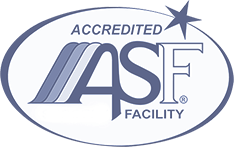Benefits and Beauty Through Facelifts
Breast Implant Revision is an essential procedure for those seeking to update or correct their previous breast augmentation. It offers an opportunity to refine the shape, size, or type of implants, addressing any issues while enhancing aesthetic appeal. This surgery tailors to individual needs, ensuring satisfaction and comfort with your body.
Our Achievements
Patients may desire to change the volume of the implants, treat capsular contracture caused by abnormal scar tissue around the implants, fix asymmetries that have occurred over time, or simply to remove the implants once and for all.
Whatever your reason, Dr. Holmes will thoughtfully design a surgical plan to address your goals.

Breast Implant Exchange Before & After Photos
* Each patient is unique and individual results may vary.
Is Breast Implant Revision Surgery right for me?
Although some women may keep their breast implants permanently, the majority of women who have breast implants desire revision surgery at some point in their lives. There are many reasons women seek revision surgery. These include capsular contracture, rupture or leaking of the implant, changes in the shape or size of a woman’s breast tissue, desire to change the implant volume or type (saline or silicone), correction of a double bubble deformity or synmastia (lack of normal separation between the breasts), visible rippling, or simply to remove the implants.

Capsular Contracture:
Capsular contracture occurs when abnormal scar tissue forms around an implant, causing the breasts to feel hard and look distorted. Although it is a natural and normal process for a woman to form a capsule around her implants, in some women these capsules can abnormally thicken, causing the contracture. Dr. Holmes addresses this problem by removing the abnormal scar tissue and changing the implant pocket if needed.
Implant Rupture:
In women who have had saline implants, implant rupture is easier to detect, because the breast becomes visibly smaller as the body absorbs the leaking saline. On the other hand, silicone implant rupture is more difficult to detect, however, many women feel a change in the implant or breast that may clue them to a problem. MRI or Ultrasound may help diagnose silicone implant rupture. Regardless of the type of implant, once ruptured it is important to replace the implant.
Changes in Breast Shape:
Over time, despite the placement of breast implants, a woman’s own breast tissue may change shape and size as the result of pregnancies and breastfeeding, normal aging, or fluctuations in weight. As this occurs, the placement of the implants and overlying breast tissue may appear aesthetically unpleasing as the breasts appear saggy and are no longer centered over the implant. Depending on the amount of skin laxity of the breasts, this can be remedied by either placing larger implants or performing a breast lift. During your consultation with Dr. Holmes, he will carefully assess your anatomy and devise a surgical plane that is unique for you.
Double Bubble:
Double bubble occurs in rare situations and can be avoided by precise surgical technique. A double bubble deformity occurs when an implant slips below the normal under crease of the breast, creating an unnatural result. This deformity can be difficult to treat but can be done through changing the implant pocket position or the use of acellular dermal matrices (also called slings), which are often used in breast reconstruction.
Synmastia:
As with double bubbles, synmastia rarely occurs when the precise surgical technique is used. Synmastia is when there is no normal separation between the breasts. Changing the implant pocket position and use of acellular dermal matrices (also called slings) are surgical techniques used by Dr. Holmes to remedy this problem.
Rippling:
Rippling occurs when surface irregularities of the implant can be seen through the skin. This is most common with saline implants and can occur due to underfilling of the saline implant or thinning of the skin. Changing implants from saline to silicone, changing to a totally submuscular pocket are solutions, or a combination of these techniques help treat rippling.
Techniques for Breast Implant Revision
There are many ways revision surgery may be performed, and it must be customized to the patient. In some cases, Dr. Holmes will need to remove scar tissue from capsular contracture before replacing the implants. Revision surgery may also involve a breast lift, implant exchange, pocket change, or use of slings. Dr. Holmes will help you through the many decisions that must be made to create a tailored surgical plan that will give you the results you are looking for.
Most patients find that the recovery process is easier than it was during the first surgery. As with any other breast surgery, some bruising and discomfort is to be expected in the first few days after surgery. However most patients find that the recovery process is easier than after their first surgery, as space already exists in the tissue for the implants and then muscles don’t need to be stretched. Exceptions are if the implant position is changed to under the muscle for the first time or a significant increase in size is performed,, which usually results in a recovery process similar to breast augmentation.
Related Procedures: Breast Augmentation, Breast Asymmetry, Breast Lift (Mastopexy), Breast Reduction, Breast Reconstruction, Male Breast Reduction
Why choose Aesthetic Surgery Center
Dr. Anurag Agarwal, M.D., F.A.C.S.
- Double board-certified facial plastic surgeon by the American Board of Facial Plastic and Reconstructive Surgery and the American Board of Otolaryngology – Head and Neck Surgery.
- Oral examiner and Board of Directors for the American Board of Facial Plastic and Reconstructive Surgery
- Former President of the Florida Society of Facial Plastic and Reconstructive Surgery
- Received his Doctor of Medicine at Philadelphia’s MCP-Hahnemann School of Medicine in 1999 and was elected to the Alpha Omega Alpha Honor Society.
- In 2016, Dr. Agarwal was honored at the annual American Academy of Facial Plastic and Reconstructive Surgery national meeting.
- Board-certified plastic surgeon by the American Board of Plastic Surgery.
- Attended medical school at UNMC (University of Nebraska Medical College).
- Was elected to the Alpha Omega Alpha Honor Society.
- Member of The Aesthetic Society, the Florida Medical Association, and Collier County Medical Society.
- General surgery residency at Loyola University Medical Center in Maywood, IL
- Plastic surgery residency at Cleveland Clinic Florida











